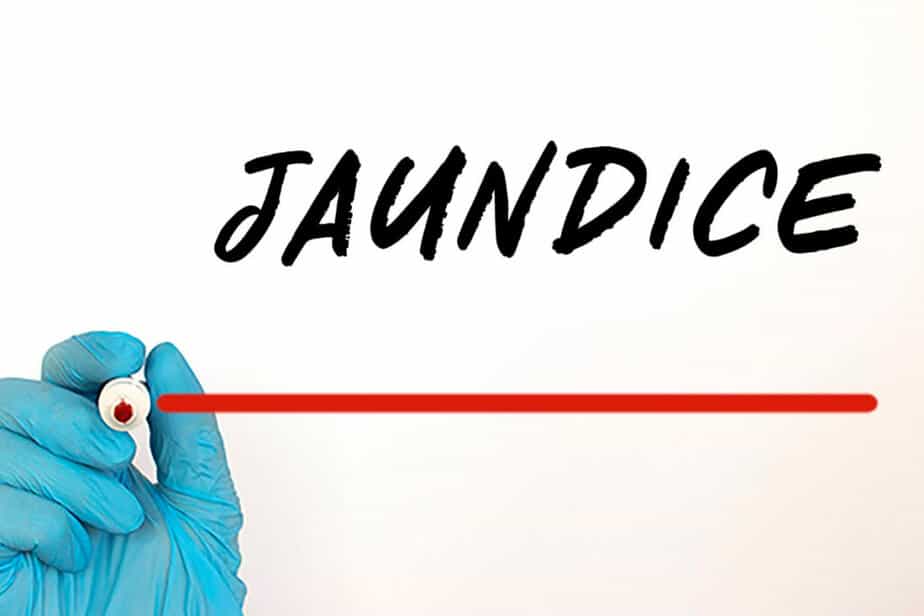Jaundice is not a disease, but rather a symptom that can occur as a result of a variety of diseases.
Jaundice appears as a yellowish discoloration of the skin and occurs along with icterus – yellowing of the whites of the eyes (sclerae) caused by the abnormal buildup of bilirubin in the blood.
An orange-yellow pigment, bilirubin is part of bile; it forms in the liver as a byproduct of old blood cells. Each day our red blood cells die, and are replaced by new ones. The liver processes the old ones, and the resulting bilirubin exits the body via the stool.
When there are too many old red blood cells for the liver to cope with, yellow pigment builds up in the body resulting in jaundice. The body’s inability to transport processed bilirubin from the liver through the biliary tract and into the gut can also cause jaundice.
- Related article: Importance of the Liver
What Does Jaundice Look Like?
Try to recall the last time you had a bruise. As it healed, the skin in the affected area would have gone through a series of color changes. During the yellow stage, you were seeing bilirubin in your skin. This is the result of the die-off of red blood cells.
With jaundice, the degree of yellowing to the skin and whites of the eyes varies depending on the level of bilirubin present. Typically, jaundice first appears in the face, and progresses downward toward the feet.
Bilirubin gives stool its brown color. An absence of bilirubin can result in light-colored stool. The typically occurs when there is a blockage and bile cannot be excreted from the liver into the intestines. Urine may darken when a buildup of bilirubin occurs.
In addition to skin, eyes, stool and urine discoloration, the symptom associated most frequently with jaundice is itching (pruritus), which can become severe, and in some cases cause sleep disruption and emotional distress.

What Diseases Cause Adult Jaundice?
The presence of jaundice is an indicator that a person is suffering from one of a variety of diseases including:
- Autoimmune hepatitis
- Biliary stricture (narrowing of the biliary duct)
- Bilirubin processing disorders present at birth (Crigler-Najjar, Dubin-Johnson, Gilbert’s, or Rotor’s syndromes)
- Blocked bile ducts (caused by gallstones, infection, or tumors)
- Cirrhosis (due to alcohol, viral hepatitis, NASH or other autoimmune/genetic conditions)
- Drug-induced cholestasis (bile pools in the liver as a result of certain drugs)
- Drug-induced hepatitis (from numerous possible medications)
- Hemolytic anemia
- Intrahepatic cholestasis of pregnancy (bile pools in the liver during pregnancy)
- Ischemic hepatocellular injury (jaundice caused by inadequate oxygen or blood flow to the liver)
- Various liver conditions (liver failure stages)
- Pancreatic cancer (which often causes a blockage of the bile duct)
- Primary biliary cirrhosis or sclerosing cholangitis liver
- Malaria
- Viral hepatitis (A, B, C, D, and E)
Jaundice in Infancy
Babies often experience jaundice during their first week of life, especially if they are premature. During birth, an abundance of red blood cells can end up dying prematurely, causing a heavy workload on the baby’s inexperienced liver. Until newborns begin to produce stool, bilirubin accumulates more easily.
In more than one in ten breastfed infants, breastfeeding jaundice may occur in the first week of life. The cause is thought to be inadequate milk intake, leading to dehydration or low caloric intake.
Less common is breast milk jaundice, which occurs in about one in two hundred babies. Caused by substances in mother’s milk that decrease the ability of a baby’s liver to deal with bilirubin, breast milk jaundice rarely causes any problems whether it is treated or not.
Diagnosing the Cause of Jaundice
In addition to a personal history and physical examination, numerous testing methods are employed to determine the underlying cause of jaundice:
- Blood tests (measuring bilirubin levels and other liver enzymes)
- Computerized tomography (uses X-rays to examine the organs in the abdomen)
- Endoscopic retrograde cholangiopancreatography (ERCP combines the use of X-rays and an endoscope to diagnose and treat problems in the liver, gallbladder, bile ducts, and pancreas)
- Endoscopic ultrasound (EUS combines endoscopy and ultrasound to obtain diagnostic images about the digestive tract and the surrounding tissue and organs)
- Liver tissue biopsy
- Magnetic resonance imaging (MRI scans use magnetization of the body to examine the soft tissues of the abdomen)
- Ultrasonography (high-frequency sound waves are bounced off internal tissue, and their echoes converted into soft tissue images)
Jaundice Treatment
Generally, the treatment of jaundice, or cholestasis requires diagnosing and treating the specific cause. If there is an obstruction or blockage in the bile duct, procedures to remove gallstones or place stents across a stricture can be helpful in relieving jaundice.
Infectious causes may require antibiotics or antiviral medications. Drug induced jaundice requires withdrawal of the medication.
Learn more about other health conditions that are related to the liver:

